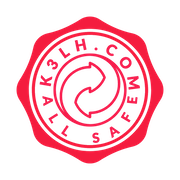Introduction
Movement is a fundamental aspect of human life that we often take for granted. From walking and running to dancing and playing sports, movement enables us to express ourselves, explore the world around us, and maintain our physical and mental health. However, many people struggle with various pain points related to movement, such as joint stiffness, muscle soreness, and poor posture. In this blog post, we will explore the various aspects of movement and how they can impact our lives. We will discuss what movement is, why it is important, interesting facts about movement, a listicle of movement types, tutorials and tips related to the keyword, and a Q&A section.
What is Movement?
Movement refers to any change in the position or orientation of a body or its parts relative to its environment. It can be intentional or spontaneous, voluntary or involuntary, and can involve various muscles, bones, and joints. Movement can take many forms, from simple movements like blinking and breathing to complex movements like playing a musical instrument or performing acrobatics.
Why is Movement Important?
Movement is essential for our physical and mental well-being. Regular movement can help us maintain a healthy weight, improve our cardiovascular health, strengthen our bones and muscles, and reduce our risk of chronic diseases such as diabetes and cancer. Movement can also enhance our cognitive function, boost our mood, and reduce our stress levels. Additionally, movement can be a source of social connection, creative expression, and personal fulfillment.
Facts About Movement
– The human body has over 600 muscles and 206 bones that work together to facilitate movement.
– The average person takes around 7,500 steps per day, which adds up to about 2.5 million steps per year.
– Exercise can increase the production of endorphins, which are natural mood boosters that can help alleviate symptoms of depression and anxiety.
– Sitting for prolonged periods can lead to various health problems, including obesity, diabetes, and heart disease.
– Yoga and other mind-body practices can help improve balance, flexibility, and mental focus.
Listicle of Movement Types
1. Aerobic exercise – These exercises include activities that increase your heart rate and breathing, such as running, cycling, and swimming. They are great for improving cardiovascular health and burning calories.
2. Strength training – This involves lifting weights or using resistance bands to build muscle strength and tone. It can help improve bone density, reduce the risk of injury, and enhance overall physical performance.
3. Flexibility training – This includes stretching exercises that can improve your range of motion, reduce muscle tension, and enhance posture. Yoga and Pilates are popular forms of flexibility training.
4. Balance training – This involves exercises that challenge your balance and stability, such as standing on one leg or practicing tai chi. It can help reduce the risk of falls and improve overall coordination.
Tutorial of Movement
One of the best ways to improve your movement skills is to practice regularly. Here is a simple tutorial for improving your posture:
1. Stand up straight with your feet hip-width apart, your shoulders relaxed, and your chin parallel to the ground.
2. Draw your shoulder blades back and down, as if you are trying to squeeze a pencil between them.
3. Engage your core muscles by pulling your belly button towards your spine.
4. Lengthen your spine by imagining a string pulling the top of your head towards the ceiling.
5. Keep your weight evenly distributed on both feet, and avoid locking your knees.
6. Take deep breaths and relax your body as much as possible.
Tips of Movement
Here are some tips for incorporating more movement into your daily routine:
1. Take frequent breaks if you have a sedentary job. Stand up, stretch, and walk around for a few minutes every hour.
2. Find an exercise buddy or join a class to make movement more fun and social.
3. Incorporate small movements into your daily activities, such as doing squats while brushing your teeth or stretching while watching TV.
4. Experiment with different types of movement to find what you enjoy the most. It could be dancing, hiking, swimming, or anything else that gets you moving.
Question and Answer of Movement
1. Can movement help with chronic pain?
Yes, movement can help reduce chronic pain by improving blood flow, releasing endorphins, and reducing inflammation. However, it is important to work with a healthcare professional to develop a safe and effective exercise plan.
2. Is it possible to overdo movement?
Yes, overexertion and repetitive strain can lead to injuries and burnout. It is important to listen to your body’s signals and take rest days as needed.
3. Can movement improve mental health?
Yes, movement has been shown to improve mental health by reducing stress, anxiety, and depression. It can also boost self-esteem and promote feelings of accomplishment.
4. How does aging affect movement?
Aging can lead to a decline in muscle mass, bone density, and joint flexibility, which can impact movement. However, regular exercise can help maintain and improve these aspects of physical function.
Conclusion of Movement
Movement is a vital aspect of our lives that can impact our physical, mental, and emotional well-being. By incorporating more movement into our daily routines and exploring different types of movement, we can enhance our health and enjoyment of life. Whether it’s dancing, hiking, or simply taking a walk, let’s embrace the power of movement and its many benefits.
Recommendations:
- Occupational Health And Safety Logo Information and documents a z. Occupational health and safety png images. Occupational Health Safety Logo Free Transparent Png Download Health and safety sign board hair. Occupational health and safety logo.…
- The Power of Movement: How Physical Activity… Movement: The Key to a Healthy Body and Mind Have you ever felt the stiffness in your body after sitting for hours in front of your computer? Do you experience…
- Food Safety Day Logo Practical realistic approaches to identify reduce risks threats allergens microbial contamination fraud vulnerabilities across the supply chain business utilising innovative scientific methods robust risk assessments technological advancements to protect consumer…
- The Power of Movement: How Exercise Can Improve Your… Movement: The Key to a Healthy Life Are you feeling lethargic and unmotivated lately? Do you struggle with joint pains and muscle stiffness? If yes, then you are not alone.…
- Workplace Safety Signs And Symbols, Why so important? Proper workplace safety signs and symbols always place in a construction site, mining site, oil and gas site or hospital and your workplace.
- The Benefits of Regular Movement for Physical and… Movement: The Key to a Healthy Life Do you ever feel like you’re stuck in a rut? Does your body ache after a long day at work? Do you find…
- Poster On No Safety Know Pain Get a diploma in industrial safety from govt. No safety know pain know safety no pain. Safety Slogans No Safety Know Pain Know Safety No Pain Safety Know safety no…
- Safety Vest For Cats There are 806 cat safety vest suppliers mainly located in asia. Free shipping on orders over 25 shipped by amazon. Kitty Holster Reflective Safety Vest Crazy K Farm Pet Poultry…
- 10 Tips for Preventing Workplace Slips, Trips, and Falls Introduction: Slips, trips, and falls are the most common cause of workplace injuries, leading to a significant number of fatalities and injuries each year. These accidents can happen in any…
- Funny Internet Safety Quotes Safety is not always the most exciting subject. Quotes pick us up when were feeling unmotivated and can be a great tool to help. 8 Best Internet Safety Cartoons Images…
- Safety Quotes Inspirational With this in mind we got to thinking about 7 of our personal favourite quotes about health and safety. And whatever your beliefs honor your creator not by passively waiting…
- The Importance of Wearing Safety Goggles in the Workplace Safety Goggles Uses: How to Protect Your Eyes from Potential Hazards We use our eyes to perceive the world around us, to communicate, and to work. However, our eyes are…
- Health And Safety At Work Poster Pdf The hse are providing businesses with free posters to download from the health and safety executives website. The health and safety law poster products tell workers what they and their…
- Health & Safety Pictures If you're searching for health & safety pictures pictures information connected with to the health & safety pictures topic, you have pay a visit to the ideal site. Our site…
- Safety Committee Meeting Topics Designate one member to ensure each person is being treated with respect and that proceedings remain on course. These 5 minute toolbox talks are easy to use. 12 Safety Meeting…
- Workplace Health And Safety Signs Employers must provide safety signs if there is a possibilty of significant risk in the workplace. What safety signs does your workplace need. Safety Signage And Your Workplace Whs Consulting…
- Power Plant Safety Topics The use of anhydrous ammonia could be a risk at another facility. A 53 year old journeyman wireman was electrocuted when he contacted two energized 69 kv bus terminals at…
- Finding Your Movement: Discovering Your Physical Passion Movement: The Key to a Healthy Life Do you often feel lethargic, tired, and unmotivated to do anything? Are you experiencing pain and discomfort in your body? If yes, then…
- Work Health And Safety Images If you're looking for work health and safety images images information linked to the work health and safety images topic, you have visit the right site. Our site frequently provides…
- Life Raft Image If you're searching for life raft image images information connected with to the life raft image keyword, you have visit the right blog. Our site frequently provides you with hints…
- Get PPE Easily with a PPE Vending Machine PPE Vending Machine. Personal Protective Equipment (PPE) is an essential component for the safety of many individuals. It provides the necessary protection to ensure that employees and individuals are safe…
- Occupational Safety Logo Looking for free vectors of health and safety. The institution of occupational safety and health iosh is a british organisation for health and safety professionals. Occupational Safety And Health Logo…
- Safety Precautions In Microbiology Laboratory 69 laboratory safety and standards precautions microbiology module microbiology notes zreturn unused materials equipment and apparatus to their proper storage locations zdispose of all waste material. No food or drink…
- Hazard And Risk Images If you're searching for hazard and risk images images information linked to the hazard and risk images keyword, you have come to the ideal site. Our site frequently gives you…
- Safety Reflective Belt Vest Free shipping on orders over 25 shipped by amazon. Weallight reflective belt vest provides 3600 reflectivity at night and is highly visible and bright in the daytimethis is a practical…
- The Importance of Wearing Safety Gear Introduction: Safety is something that should never be taken for granted. Whether you are at home, work, or on the road, it is crucial to prioritize your safety and the…
- Safety Planning Intervention Template The safety planning intervention for suicide prevention is a free online course from the new york state office of mental health and columbia university designed for education and training of…
- Promoting Safety Awareness: The Importance of Safety… The Importance of Safety Week Poster Competition Introduction 🚧 Are you passionate about promoting safety in your workplace or community? Do you believe in the power of visual communication to…
- Monthly Safety Topics Direct to your inbox. Health safety committee member health care provider. National Safety Month The national safety council nsc publishes an annual list of safety meeting topics. Monthly safety topics.…
- Safety First Sports Get 32 safety first sports coupon codes and promo codes at couponbirds. Our team of former c ollegiate athletes and youth coaches have the experience and expertise as well as…
Advertisement
Scroll to Continue With Content




